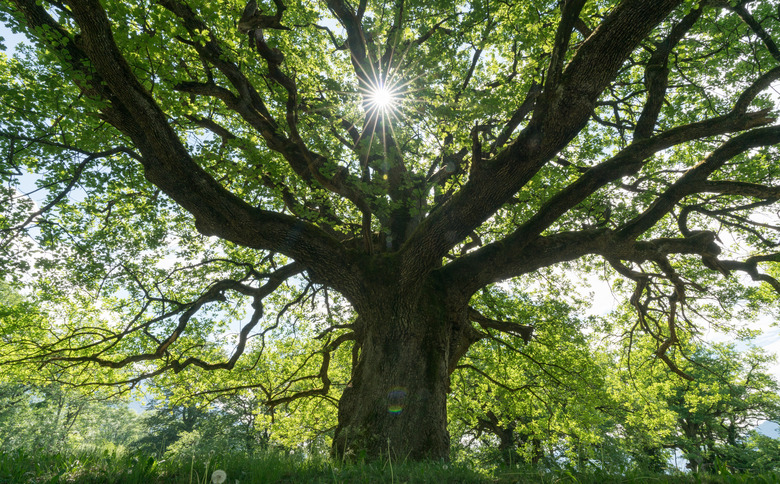Tips On Dying Oak Tree Branches
We may receive a commission on purchases made from links.
An oak tree (Quercus spp.) might be the largest, most stately and most impressive tree in your yard ... until it starts failing and you notice dying oak tree branches nestled in among its living branches. While oaks are generally hardy trees that are able to withstand a variety of conditions, some problems can cause the branches on these giants of the landscape to wither and die.
Dying oak tree branches are often a sign of poor growing conditions, illness or pest infestations. Prompt treatment can help reduce damage, promote proper growth and extend the lives of your oak trees.
Count the Dead Branches
Count the Dead Branches
So you've noticed a few dead-looking branches on your mighty oak. Before panicking, do some quick math. Calculate roughly how many of the tree's branches appear dead. An oak tree that displays 10 percent or fewer dead branches may simply be going through a natural stage of growth and renewal.
Dead branches are a normal occurrence in healthy trees, and the absence of leaves is not always a sign of a dead branch. Dead branches contain no leaves and feel brittle to the touch. Bending a dead branch will cause it to snap. A live branch without leaves may contain a foliar pest that eats away the leaves, making the branch look dead. Spraying the branches with an insecticidal soap may help eliminate the pests responsible for the damage.
Recognize Oak Wilt
Recognize Oak Wilt
Ceratocystis fagacearum, commonly called oak wilt, is a fungus that affects oak trees, especially in the central and eastern United States. Oak wilt affects trees in both groups — the Red Oak Group and White Oak Group — but is more common among red oak types. This deadly disease first appears as wilting of the leaves in the late spring and early summer. Dead leaves fall from the tree and cause heavy areas of defoliation, leaving the oak branches bare. Dead branches often develop dark streaks below the bark.
This fungus enters the trees through open wounds. Protect damaged oaks with tree wound dressings to minimize the risk of oak wilt disease. Oak wilt can be fatal to an oak, so even this treatment may be insufficient to save a dying tree.
Check the Roots
Check the Roots
Dead branches on oaks and other trees can also signal girdling, a root condition that inhibits the growth of new roots. Oaks with this condition may have dead branches and missing leaves on just one side of the canopy. Check the base of the affected tree for roots that seem to circle the trunk rather than spreading away from the tree. Removing the circling roots will allow the other roots to grow freely outward and enhance the health of the oak tree.
Avoid Using Too Much Herbicide
Avoid Using Too Much Herbicide
Weed killers that reduce the growth of weeds in your lawn can also damage the health of an oak tree. Oaks produce numerous lateral roots that run just under the surface of the soil. Applying an herbicide over these roots can cause leaves to curl and twist, and applying excessive amounts may lead to the death of some limbs. Avoid harming your oak trees by applying herbicides on calm days and keeping them off the soil under the canopies.
